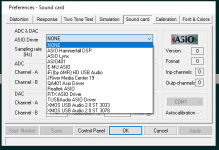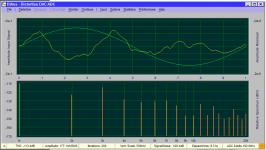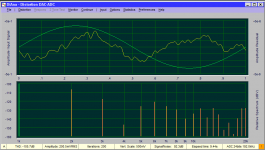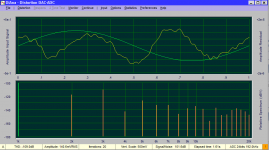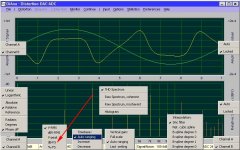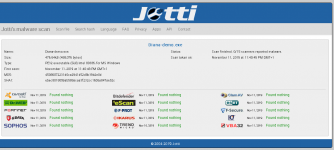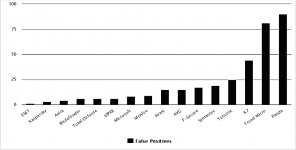Thanks for the correction, sorry for the misinformation.
That MCU would not sample like an audio ADC, no need for the purpose. Precise value is already sampled by the soundcard. If an approximate value were needed on the PC side, outside of the analyzer, a few samples a second behind some AC/DC to hold peaks (somehow already present in the device for the existing MCU) should be easily attainable.
But again, the ADC is not point of this. I just wanted to suggest one way towards enhancing existing devices with simple remote interface without complicated modifying their firmware, if possible.
That MCU would not sample like an audio ADC, no need for the purpose. Precise value is already sampled by the soundcard. If an approximate value were needed on the PC side, outside of the analyzer, a few samples a second behind some AC/DC to hold peaks (somehow already present in the device for the existing MCU) should be easily attainable.
But again, the ADC is not point of this. I just wanted to suggest one way towards enhancing existing devices with simple remote interface without complicated modifying their firmware, if possible.
Sorry for continuing being off-topic in Edmonds thread.
However, I would like to point out that instead of using the ATMega processor based boards a STM32 based board would be a better solution. STM32F103 based boards are also dirt cheap on Aliexpress. The board often referred to as the Blue-pill board would be a candidate and are also supported by the Arduino framework. So it shouldn't be that different from a programming point of view.
Although not as cheap there also is this board from ST's Nucleo series. It has an STM32L432 which also has USB connectivity, but also hardware floating point module if needed. NUCLEO-L432KC STMicroelectronics | Mouser Europe
Back to normal again.
Mogens
However, I would like to point out that instead of using the ATMega processor based boards a STM32 based board would be a better solution. STM32F103 based boards are also dirt cheap on Aliexpress. The board often referred to as the Blue-pill board would be a candidate and are also supported by the Arduino framework. So it shouldn't be that different from a programming point of view.
Although not as cheap there also is this board from ST's Nucleo series. It has an STM32L432 which also has USB connectivity, but also hardware floating point module if needed. NUCLEO-L432KC STMicroelectronics | Mouser Europe
Back to normal again.
Mogens
Would the EMU 0404 USB also be in this list?
Thanks!
post 946 ...
Hi Demian,used the following:
ESI Juli@
EMU 1212, 1616
Lynx L22
RME HDSP9632
RTX
QA401
Pretty much anything that can support an ASIO interface properly. Some of the above were harder to get working but that's typical with the DAW software as well.
Could you be more specific about "Some of the above were harder to get working" ? Which one and what caused the trouble, the driver, the OS or DiAna? In case of the latter, maybe I can do something about it.
Cheers, E.
Last edited:
The issue with the pro cards usually has to do with 16/32 I/O channels and which are the live ones and in the EMU creating an EMU setup that will connect ASIO to the correct in and out. The latest Windows screwed up the drivers and needed to install a set of patches (E-MU 1616m, 1212m, 1820m, 0404 Audio Interface - Complete Windows 10 (1903 & Above) Installation Guide - KVR Audio) to get it working again. Its all installed now.
Everything is working (see below) on Windows 10 pro 1903.
Note that the Lynx and the EMU use the same ADC. They have very similar distortion signatures.
Everything is working (see below) on Windows 10 pro 1903.
Note that the Lynx and the EMU use the same ADC. They have very similar distortion signatures.
Attachments
Version 1.58.11
A new version is available. The main differences are:
1. Better handling of abnormal conditions. For example a disconnected USB cable of the RTX.
2. Interpolation of notch response data.
Now two file formats are supported. One format that contains the frequency, amplitude and phase of the harmonics only, and the other format that represents a more general description of frequency response, which also may contain non-harmonic related data.
In case no data is available that exactly coincidance with a harmonic, amplitude and phase will be calculated by means of interpolation. To be more precise, by means of a 3rd degree B-spline.
Note that the harmonic numbers have been omitted (see below). This applies to input files as well as output files. Because only the last three columns with data are read, the old format is still compatible with the new version: In case of four columns, the first column, containing the harmonic numbers, is simply ignored.
Further note that the phase may also be expressed in degrees instead of radians. Conversion to radians is automatically applied to the whole column when any of the elements exceeds a value of 2π.
[ Frequency(Hz), Amplitude(rel), Phase(rad)]
996.55000, 0.000093400134, -0.021156470303
1993.10000,0.338144607508, +1.244434305261
2989.65000,0.537856863474, +1.011301321390
3986.20000,0.666572554433, +0.843351550177
4982.75000,0.751511500915, +0.717929204793
5979.30000,0.808957742166, +0.622002594714
6975.85000,0.848941839832, +0.547009627997
7972.40000,0.877516136578, +0.487164796811
8968.95000,0.898531800794, +0.438563608940
9965.50000,0.914314412311, +0.398385145081
etc.
92679.15000,0.986061757179, +0.040545725208
93675.70000,0.982143236188, +0.035854553039
94672.25000,0.975956561147, +0.025633609543
95668.80000,0.970533209737, +0.007349916812
[end]
Cheers, E.
A new version is available. The main differences are:
1. Better handling of abnormal conditions. For example a disconnected USB cable of the RTX.
2. Interpolation of notch response data.
Now two file formats are supported. One format that contains the frequency, amplitude and phase of the harmonics only, and the other format that represents a more general description of frequency response, which also may contain non-harmonic related data.
In case no data is available that exactly coincidance with a harmonic, amplitude and phase will be calculated by means of interpolation. To be more precise, by means of a 3rd degree B-spline.
Note that the harmonic numbers have been omitted (see below). This applies to input files as well as output files. Because only the last three columns with data are read, the old format is still compatible with the new version: In case of four columns, the first column, containing the harmonic numbers, is simply ignored.
Further note that the phase may also be expressed in degrees instead of radians. Conversion to radians is automatically applied to the whole column when any of the elements exceeds a value of 2π.
[ Frequency(Hz), Amplitude(rel), Phase(rad)]
996.55000, 0.000093400134, -0.021156470303
1993.10000,0.338144607508, +1.244434305261
2989.65000,0.537856863474, +1.011301321390
3986.20000,0.666572554433, +0.843351550177
4982.75000,0.751511500915, +0.717929204793
5979.30000,0.808957742166, +0.622002594714
6975.85000,0.848941839832, +0.547009627997
7972.40000,0.877516136578, +0.487164796811
8968.95000,0.898531800794, +0.438563608940
9965.50000,0.914314412311, +0.398385145081
etc.
92679.15000,0.986061757179, +0.040545725208
93675.70000,0.982143236188, +0.035854553039
94672.25000,0.975956561147, +0.025633609543
95668.80000,0.970533209737, +0.007349916812
[end]
Cheers, E.
Edmund- Based on my experiece with the tests above is it possible to add a display based on dBFS? It would help when trying to determine headroom or optimum operating levels.
I'll be exploring the new version with all of this and a notch filter to see what I can learn today or tomorrow.
I'll be exploring the new version with all of this and a notch filter to see what I can learn today or tomorrow.
By the way, I've scanned the new version with "jotti" and it didn't find any virus (read: false positives). With "virustotal", I don't know. After too many false positives I ignore this service, because it is 'totally' unreliable (pun intended).
Attachments
Last edited:
False positives
More on false positives. Please, take a look at the picture below. Some AV scanners behave quite well, for example ESET (I'm using that too), while others are horrible (like Panda).
Source: False Alarm Test March 2019 | AV-Comparatives
Cheers, E.
More on false positives. Please, take a look at the picture below. Some AV scanners behave quite well, for example ESET (I'm using that too), while others are horrible (like Panda).
Source: False Alarm Test March 2019 | AV-Comparatives
Cheers, E.
Attachments
Hi Demian,
With a right mouse click on the amplitude pane (on the status bar) you can select dBFS.
Also note all the other pop-up menus.
Cheers, E.
That's great. One other suggestion- until a formal calibration I would want it to default to dBFS since that is intrinsically "correct".
- Home
- Design & Build
- Equipment & Tools
- DiAna, a software Distortion Analyzer
